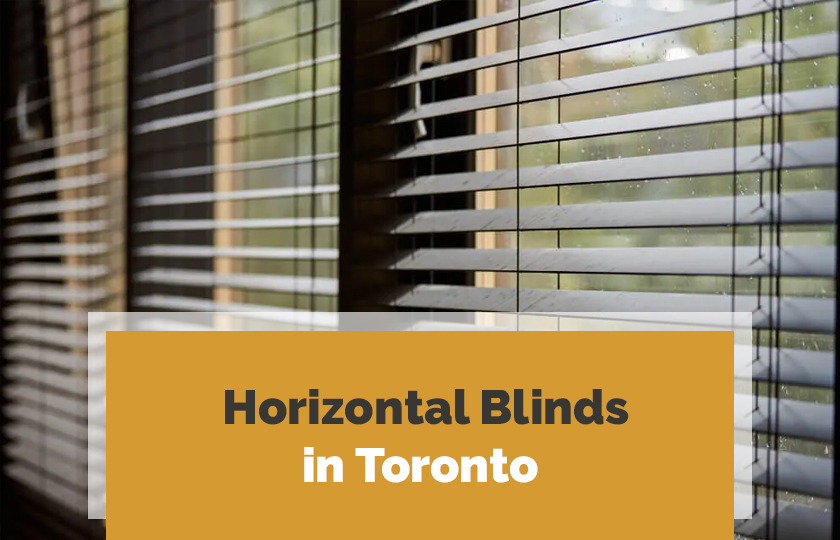Blinds are a modern alternative to curtains. They enhance both the functionality and style of a room while making your home’s decor more appealing.
However, the sheer variety of blinds makes choosing the right ones a challenge. Are you looking for the perfect blinds to fit a large window but are not sure whether horizontal or vertical ones will best complement your Mississauga home? Not to worry. Centurian Window Fashions can help you choose the right blinds.
That said, there are certain factors you should consider. Let’s start by comparing vertical and horizontal blinds.
What Are the Differences Between Vertical and Horizontal Blinds?
Obviously, the main difference is that the former have vertical slats; the latter, have horizontal ones.
The opening mechanism of each is also different. Horizontal blinds lift from the bottom and typically employ a cord-and-pulley system, which is great for smaller, narrower windows.
On the other hand, the long slats of vertical blinds are well-matched to broad windows and doors.
Keep reading to learn the differences between the two and which is perfect for you.
1. Usage
Vertical blinds are best for large windows, as they fit well and are easy to install. You can use them to cover sliding glass doors, long and wide windows, French windows, and conservatory windows.
These blinds are easy to access and offer greater light control because they have larger slats and hang at the top of the window opening. They help to keep your home cool and comfortable. They are energy-efficient, easy to clean and offer a sleek modern look to match the contemporary decor in either a residential or commercial setting. Centurian Window Fashions makes it easy to find the right fitting vertical blinds for your windows with their customization options.
Horizontal blinds, on the other hand, are great for smaller, narrower windows. Horizontal blinds have thinner slats than vertical blinds, which best suits them to traditional windows, which are opened to circulate air. Since they have thinner slats, they do not efficiently block light. That is why they are used for small or medium-sized windows.
2. Position
Your window’s position also plays a major role in deciding the ideal type of blind. Since vertical blinds can be moved right or left, you can install them on east or west-facing windows to block the sun according to its position during the day. And since horizontal blinds can be moved up and down, they should be installed on windows that face north or south in response to changes in the sun’s angle.
3. Privacy and Light Control
When it comes to privacy, horizontal blinds are more convenient, as vertical ones tend to sway from side to side or become off-kilter. This results in gaps in coverage. Horizontal blinds are much less likely to expose your interiors.
If you are more concerned about light control, use vertical blinds. Since they have larger, wider slats than horizontal blinds, a single vertical blind can block more sunlight. You can install wider vertical blind slats to absorb heat while filtering light to keep the space cool and comfortable when it’s too sunny. They are useful heat savers in the winter months as well, so are an energy-efficient option to save on energy bills. You can also install blackout vertical blinds for full privacy and to block the rising sun from waking you up.
4. Cleaning and Maintenance
If you are concerned about dirt or dust collecting at the bottom of your window treatments, you should go for horizontal blinds as they rest on window sills instead of the floor. They also make less noise than horizontal blinds because of how their slats are positioned parallel to the floor. This makes them less likely to rub against each other and cause noise when they are being adjusted.
In terms of cleaning, vertical blinds are easier to clean as their vanes or slats hang up and down. This makes them easier to access and to clean all their surfaces. By contrast, because the slats of horizontal blinds run parallel to the floor, you often need to tilt or remove each slat individually to clean them. This can be time-consuming and tedious.
The material with which vertical blinds are made is another factor that makes them easier to clean. Vertical blinds are frequently made of vinyl or fabric – both of which are lightweight and easily cleaned with a damp cloth. Horizontal blinds made of wood or metal, on the other hand, can be heavy and require more specialized cleaning products.
5. Still Can’t Decide?
These are the major features of vertical and horizontal blinds. Compare them to find the right window covering solution to match your home decor, window position, privacy, and maintenance. Centurian Window Fashions offer both in a wide variety of cell sizes, fabrics, colours, and opacities. Visit our stores to find the best window treatments at the best prices.

